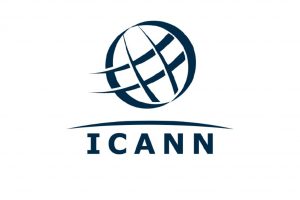

What is TLD Domain?
The TLD, short for a top-level domain, is the last part of a domain name – characters that come after the last dot. The most common example is .com, but there is a wide range of different TLDs, which we will cover in this article.
Top-level domain (TLD) is part of a domain that comes after the dot, com, org, or net.
What is the Purpose of Top Domains?
Since high-quality domains are categorized according to what a website is associated with, they can be used to identify the purpose of the website, owner, or location – without having to remember the content of the website.
For example, a high-quality .edu domain indicates that the website is used for educational purposes. Now, you have to remember that “WordPress.org” is different from “WordPress.com”.
If you look up any domain name, you will see a series of words, letters, or numbers dotted with dots. For example, the Kinsta capture dashboard is available at my.kinsta.com – three words separated by two dots.
To find someone on the Internet, you have to type an address on your computer – name or number. That address should be different so that computers know where to find each other.
Types of TLD
ICANN divides the TLD into three main categories according to the purpose of the website, its owner, and its location, namely:
- gTLD – General Standard Domains
- sTLD – Top Supported Domains
- ccTLD – Top Country Code Domains
1. General Standard Domains: gTLD
GTLD is the most popular domain that allows the entire list of users to register. The most common examples of this type of top-level domain are:
- .com – on commercial sites
- .org – for organizations
- .net – networks
- .xyz – for general use
- .name – for individuals
- .biz – for businesses
- .info – information platforms
However, there are gTLDs restricted to certain users: they are called high-end supported domains.
2. Top Supported Domains: sTLD
An sTLD is a type of standard domain that is hosted by private organizations. Users who want to register their site under this domain must comply with certain rules. Some examples of sTLD are:
- .gov – of U.S. government sites
- .edu – educational institutions
- .int – for global purposes related to the agreement
- .mil – for the U.S. military
- .mobi – for mobile product and service websites
- Jobs – for companies or legal entities
- .tel – on online communication services websites
- posts – for postal service sites
- .asia – one of the Asia-Pacific-based websites
3. Top Country Code Domains: ccTLD
Country TLD code identifies the location or location of the ISO code. The ISO code is a two-letter code that represents the name of certain locations. Typical examples of this type of TLD are:
- .es – Spain
- .ru – Russia
- .us – United States of America
- .ca – Canada
- .nl – Netherlands
- .de – Germany
- .fr – France
- .in – India
- .ch – Switzerland
- .jp – Japan
- .cn – China
- .br – Brazil
- .id – Indonesia
What purpose does ICANN serve?
ICANN links these unique identities around the world. Without this collaboration, we would not have a single global Internet.
ICANN does not control Internet content. It cannot stop spam and does not work with Internet access. But with its role in integrating the Internet name system, it has a significant impact on the expansion and evolution of the Internet.
Since 2014, ICANN has released more than 2,000 new extensions covering all areas from clubs and leisure to industry, science and technology, and locations. The addition of new high-quality domains has put pressure on early gTLDs.
Interestingly, .com remains one of the world’s most popular and well-known gTLDs, probably because it was one of the first high-end domains. Consumers are setting a higher value than the .com domain value over new extensions simply because of their overall popularity.


